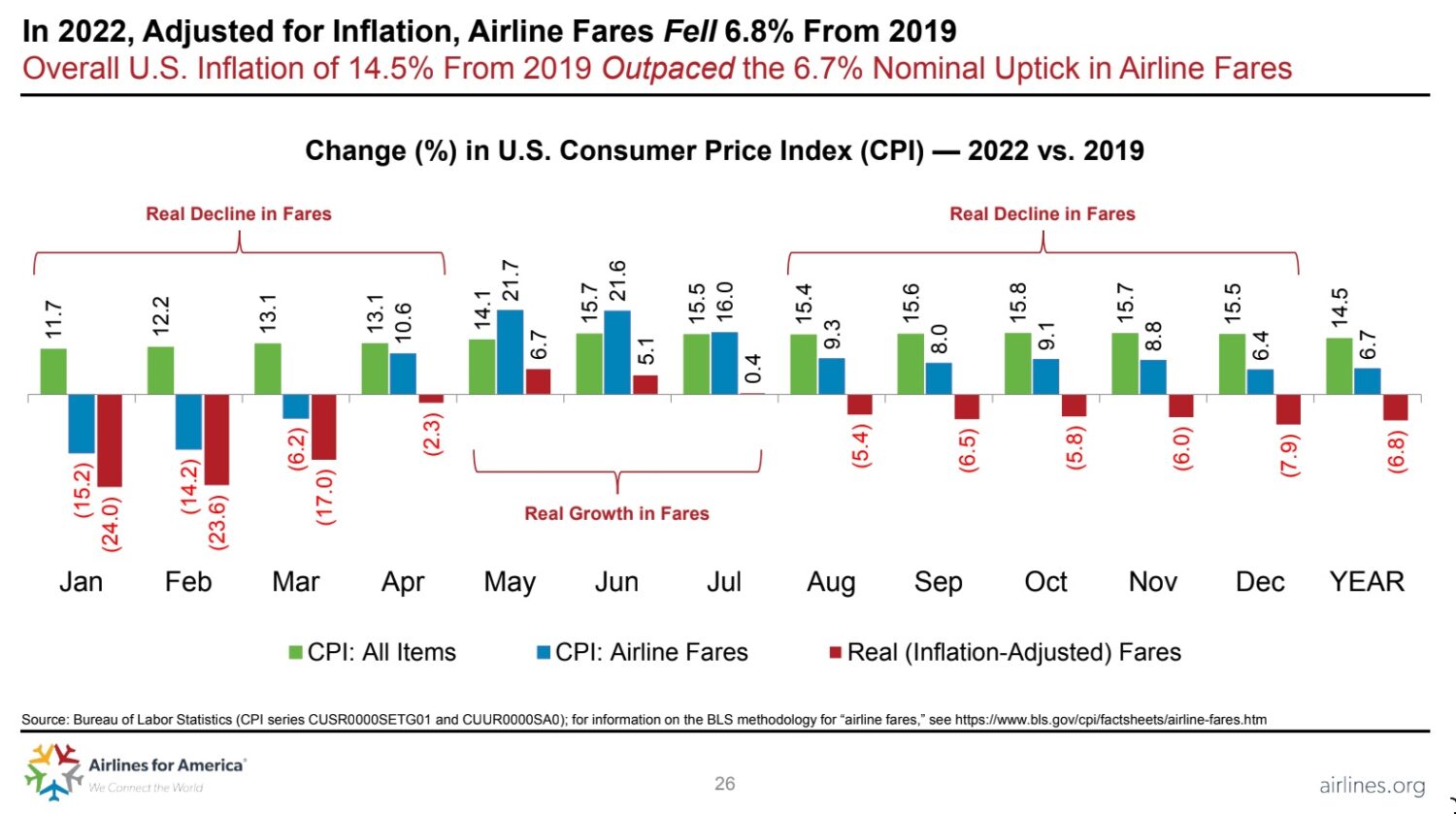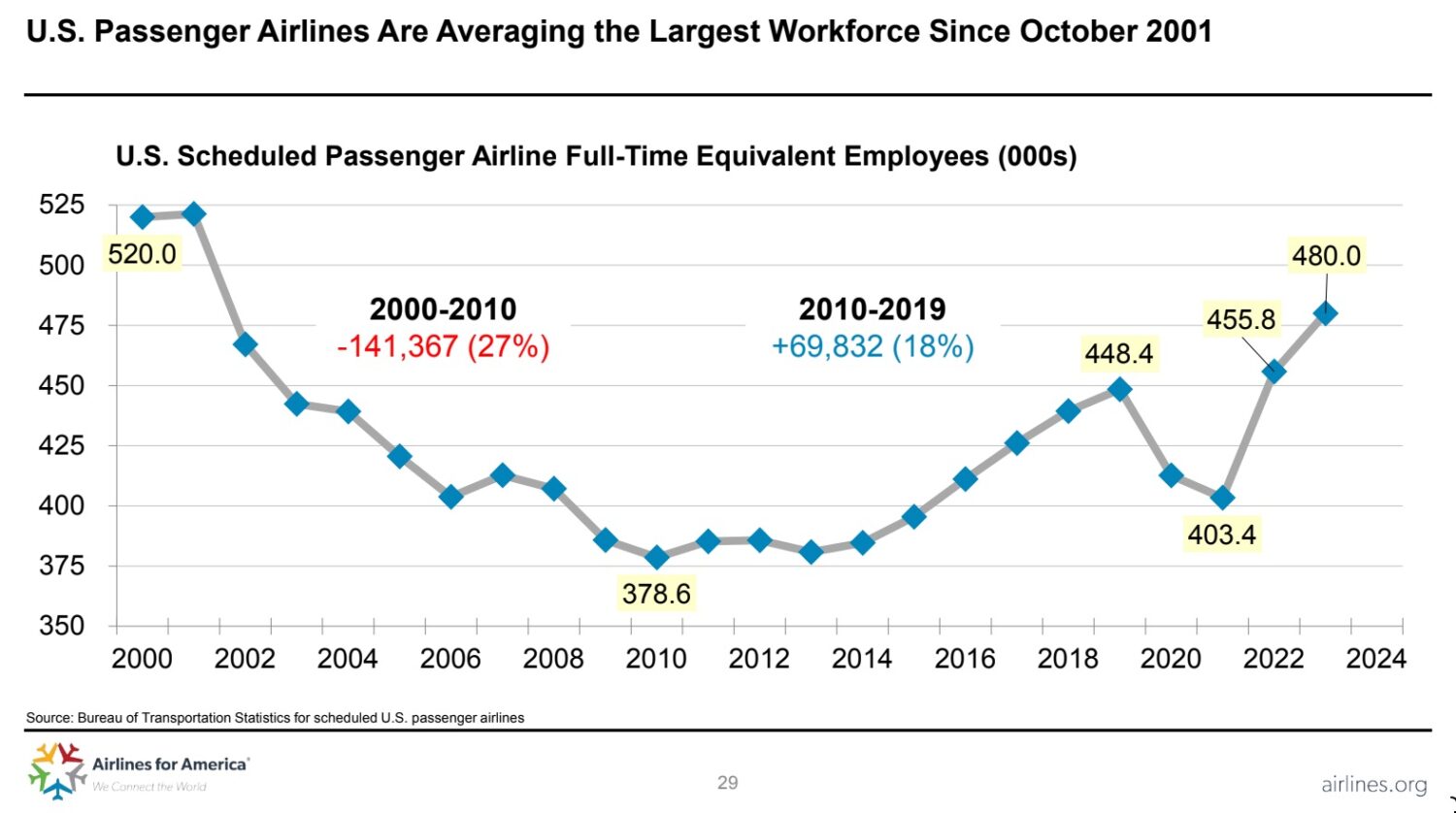If you’ve ever wondered why domestic flights can be so expensive, you’re not alone. Many people are puzzled by the high costs associated with flying within their own country. In this article, we’ll explore the factors that contribute to these prices and uncover the reasons behind them. So, buckle up and get ready for a journey into the world of domestic flight fares!
It’s no secret that airfare prices can sometimes leave us scratching our heads. While we dream of jetting off to exciting destinations, the costs have a way of bringing us back down to earth. But have you ever stopped to wonder why this is the case? Why are domestic flights so expensive? Well, my curious young reader, the answer lies in a complex web of factors that influence the pricing of these flights.
Picture this: a bustling airport, with planes taking off and landing every few minutes. Behind the scenes, airlines are managing numerous expenses to keep their operations running smoothly. From fuel prices to maintenance costs, and even the salaries of the pilots and flight attendants, there are many factors that contribute to the high prices we pay for our tickets. But fear not, because we’re here to unravel the mysteries and shed some light on why domestic flights can put a dent in our wallets.
So, fasten your seatbelt and prepare for takeoff as we delve into the fascinating world of domestic flight pricing. It’s time to understand why these flights often come with a hefty price tag and explore some tips and tricks to help you navigate the skies without breaking the bank. Let’s get started, shall we?
Are you wondering why the cost of domestic flights is so high? Well, there are several factors that contribute to this. Firstly, demand and supply play a significant role, with limited seats available on popular routes. Additionally, airline operational costs, such as fuel prices and maintenance expenses, impact ticket prices. Moreover, taxes, government regulations, and airport fees also contribute to the overall cost. Keep these factors in mind when planning your next domestic trip.

The Economics Behind Expensive Domestic Flights: Exploring the Factors
Domestic flights have become an integral part of modern travel, offering convenience and accessibility to countless destinations. However, many travelers have often wondered why domestic flights tend to be significantly more expensive than their international counterparts. In this article, we delve into the economics behind this phenomenon, exploring the various factors that contribute to the high cost of domestic air travel.
The Cost of Operating Airlines: The Price of Efficiency and Safety
Running an airline involves significant expenses, both on the ground and in the air. To ensure the safety and efficiency of domestic flights, airlines have to invest heavily in state-of-the-art aircraft, advanced navigation systems, and well-trained staff. These costs are passed on to passengers through high ticket prices. Additionally, many airlines operate on tight profit margins, which means they need to charge higher fares to cover operating costs and generate profits.
Moreover, airports charge airlines various fees, including landing fees, gate rentals, and security charges, all of which contribute to the overall cost of operating domestic flights. These fees are necessary for airports to maintain and upgrade their infrastructure, but they ultimately add to the expenses airlines must cover, driving up ticket prices for passengers.
Lastly, fuel costs play a significant role in determining the fares for domestic flights. While airlines often purchase fuel in advance to hedge against potential price fluctuations, fuel expenses still account for a sizable portion of their overall operating costs. When fuel prices rise, airlines may be forced to pass on the additional expenses to passengers, translating into higher ticket prices.
The Impact of Demand and Supply on Ticket Prices
The principles of supply and demand also heavily influence the pricing of domestic flights. Airlines use complex algorithms to determine ticket prices based on factors such as demand, peak travel seasons, historical data, and competitor pricing. When demand for tickets is high, especially during holidays or peak travel periods, airlines can charge premium prices to capitalize on the increased demand.
Additionally, the limited number of available seats on domestic flights can contribute to higher prices. Airlines aim to maximize their profits by filling each flight to capacity while ensuring that they can cover their costs. As a result, when there is high demand but limited availability, ticket prices tend to rise.
Furthermore, the presence of low-cost carriers has also influenced the pricing dynamics of domestic flights. While low-cost carriers initially disrupted the market with their affordable fares, many full-service airlines have adjusted their pricing models to remain competitive. This has led to higher ticket prices across the board, as full-service airlines strive to strike a balance between affordability and offering a quality flying experience.
Regulations, Taxes, and Infrastructure: The Hidden Costs
Regulations, taxes, and infrastructure also contribute to the high prices of domestic flights. Government regulations impose various requirements on airlines, from safety standards to operational procedures. Compliance with these regulations can entail additional expenses, which are inevitably passed on to consumers. Similarly, taxes on air travel, such as airport taxes, security fees, and customs duties, add to the overall cost of flying domestically.
Investments in airport infrastructure and maintenance are crucial for ensuring the smooth operation of domestic flights. However, these projects require significant funding, often acquired through airport charges and levies placed on airlines. These costs, once again, ultimately find their way into the ticket prices paid by passengers.
In conclusion, the high cost of domestic flights can be attributed to a combination of factors, including the expenses involved in operating airlines, the impact of supply and demand, and the influence of regulations, taxes, and infrastructure. It is essential for passengers to understand these factors to make informed decisions when booking domestic flights.
Pros and Cons of Domestic Flights: Making Informed Travel Choices
Domestic flights offer undeniable convenience and speed, enabling travelers to reach their desired destinations quickly. However, like any mode of transportation, domestic flights also come with their own set of pros and cons. By weighing these factors, travelers can make informed choices about whether to opt for domestic flights or explore alternative methods of transportation.
The Benefits of Domestic Flights: Efficiency and Accessibility
Domestic flights offer several benefits that make them an attractive option for many travelers. Firstly, they are incredibly efficient, saving travelers time and effort when compared to alternative modes of transportation, such as road trips or train journeys. With domestic flights, travelers can cover long distances in a matter of hours, allowing them to make the most of their vacation or business trip.
Additionally, domestic flights offer accessibility to locations that may be challenging or time-consuming to reach through other means. Traveling to remote or less accessible areas within a country becomes significantly easier with domestic flights. These flights can also be a lifeline for individuals residing in remote areas, providing them with essential connectivity to major cities and services.
Furthermore, domestic flights often provide travelers with a higher level of comfort and amenities compared to other modes of transportation. Many airlines offer in-flight entertainment, Wi-Fi connectivity, and dedicated cabin crew, ensuring a pleasant and enjoyable journey.
The Drawbacks of Domestic Flights: Cost and Environmental Impact
While domestic flights offer numerous advantages, there are also some drawbacks that travelers should consider. One significant drawback is the cost. Domestic flights are often more expensive than other modes of transportation, making them less accessible to budget-conscious travelers. Factors such as fuel prices, airport fees, and operating costs contribute to these higher fares.
Additionally, domestic flights have a significant environmental impact. Air travel, particularly on shorter flights, contributes to carbon dioxide emissions, which contribute to climate change. This has led to growing concerns about the sustainability of air travel and the need to explore greener alternatives.
Another drawback of domestic flights is the potential for flight delays and disruptions. While airlines strive to maintain consistent schedules, factors such as adverse weather conditions, technical issues, and air traffic congestion can lead to flight delays or cancellations. This can be frustrating for travelers who have time-sensitive itineraries or connecting flights.
Tips for Traveling on Domestic Flights
Despite the drawbacks, many travelers still choose domestic flights for their convenience and efficiency. To make the most of your domestic flight experience, consider the following tips:
- Book your tickets in advance to secure the best fares.
- Check-in online to save time at the airport.
- Arrive early to avoid any potential delays or last-minute hassles.
- Pack efficiently to avoid excess baggage fees and make your journey more comfortable.
- Stay informed about any flight updates or changes through airline apps or notifications.
- Make use of loyalty programs or frequent flyer miles to earn rewards and benefits.
- Consider alternative airports or nearby cities for potential cost savings.
By following these tips, you can enhance your domestic flight experience and make the most of your travel plans.
Investing in the Future: Innovations and Challenges in Domestic Flights
The aviation industry is continuously evolving, with airlines and industry stakeholders constantly seeking new ways to improve the domestic flight experience. In recent years, several innovations and challenges have emerged, shaping the future of domestic air travel.
Improving Technology and Passenger Experience
Advancements in technology have revolutionized the aviation industry, leading to improved passenger experiences and operational efficiencies. Airlines have embraced digitalization, offering services such as online check-in, mobile boarding passes, and self-service kiosks to enhance convenience for travelers.
In-flight entertainment systems have also undergone significant improvements, with airlines offering a wide range of movies, TV shows, and music options to keep passengers entertained during their journeys. High-speed Wi-Fi connectivity is becoming more prevalent, allowing travelers to stay connected and productive while in the air.
Furthermore, airlines have placed a renewed focus on passenger comfort, investing in more spacious seating arrangements, increased legroom, and improved cabin amenities. Some airlines have even introduced premium economy class, offering a balance between affordability and enhanced comfort.
Sustainability and Environmental Impact
One of the biggest challenges facing the aviation industry is its environmental impact. In recent years, there has been a growing emphasis on sustainability and reducing carbon emissions. Airlines are investing in more fuel-efficient aircraft, exploring alternative fuels, and implementing measures to reduce waste and promote recycling.
Additionally, some airlines are offering passengers the option to offset their carbon emissions by making voluntary contributions to environmental projects. This allows travelers to mitigate the environmental impact of their flights.
Tackling Overcrowding and Airspace Management
As air travel continues to grow, issues of overcrowding and efficient airspace management have become significant challenges. Airports and airlines are working together to improve infrastructure, create more efficient air traffic control systems, and optimize flight routes to minimize congestion and delays.
In some regions, there are ongoing discussions about the need for additional airports or expansion of existing ones to accommodate the increasing demand for domestic flights. These efforts aim to enhance capacity and alleviate congestion at major airports.
The Future of Domestic Flights: Evolving with the Times
The domestic flight industry is a dynamic and ever-changing landscape, driven by technological advancements, market demands, and environmental concerns. As the industry adapts to these factors, domestic flights will continue to evolve to meet the needs of travelers.
Technological Innovations and Automation
Advancements in technology will play a crucial role in shaping the future of domestic flights. From the development of supersonic aircraft to the potential use of electric or hybrid planes, the aviation industry is constantly exploring ways to improve efficiency and reduce environmental impact.
Automation will also continue to be a key focus area. From automated check-in processes to self-service baggage handling, airlines will increasingly rely on technology to streamline operations and enhance the passenger experience.
Sustainable and Eco-Friendly Practices
The push for sustainability and reduced environmental impact will drive the adoption of eco-friendly practices within the domestic flight industry. Airlines will continue to invest in fuel-efficient aircraft, explore renewable energy sources, and implement sustainable practices throughout their operations.
Additionally, the development of biofuels and advancements in electric aviation technology will contribute to reducing carbon emissions and fostering a more sustainable future for domestic flights.
Enhanced Passenger Experience
Passenger comfort and satisfaction will remain a priority for airlines, with continuous improvements to seating, in-flight entertainment, and onboard amenities. The introduction of virtual reality experiences, personalized services, and enhanced connectivity will further elevate the passenger experience on domestic flights.
In conclusion, while domestic flights may be expensive due to a range of factors, such as operational costs, supply and demand dynamics, regulations, taxes, and infrastructure expenses, they offer undeniable benefits such as efficiency, accessibility, and comfort. By understanding the economics and considering the pros and cons, travelers can make informed decisions when choosing domestic flights. The industry’s continuous focus on innovation and sustainability ensures that the future of domestic flights will be an exciting one, filled with technological advancements, enhanced passenger experiences, and a reduced environmental impact.
Key Takeaways: Why Are Domestic Flights So Expensive?
- 1. Airlines need to cover various costs, such as fuel, maintenance, and employee salaries.
- 2. Taxes and fees imposed by governments can increase the overall ticket price.
- 3. Limited competition among airlines can lead to higher fares.
- 4. Demand for flights during peak travel seasons can drive up prices.
- 5. Additional services and amenities provided by airlines may contribute to the cost.
Frequently Asked Questions
Welcome to our frequently asked questions section related to domestic flight prices. Here, we address some common queries regarding why domestic flights can be expensive. Gain insights into the factors that influence ticket prices and understand why air travel within your country may sometimes come with a hefty price tag.
1. Why do domestic flights often seem more expensive than international flights?
Although it may seem counterintuitive, there are a few reasons why domestic flights can appear more expensive than international ones. Firstly, domestic routes generally have more competition, which can drive up prices as airlines try to cover their costs. Additionally, international flights often benefit from subsidies and lower taxes, resulting in cheaper tickets compared to domestic routes. Lastly, domestic flights often encounter higher operational costs, such as landing fees and airport charges.
Ultimately, the perception of domestic flights being more expensive can also be influenced by factors like demand and the time of year. During peak travel seasons, domestic fares may spike due to higher demand, making international flights appear comparatively cheaper.
2. How do airline operating costs impact domestic flight prices?
Airlines incur significant operating costs that directly impact domestic flight prices. These costs include fuel expenses, maintenance and repair fees, employee salaries, and leasing or purchasing aircraft. Additionally, airlines must account for costs related to ticketing systems, marketing, and customer service. These operating expenses are bundled into the overall ticket price, thus contributing to the perceived high cost of domestic flights.
Furthermore, airline companies follow revenue management strategies to maximize profits. This involves optimizing seat availability and pricing to balance supply and demand. By carefully managing seat inventory and offering different fare classes, airlines can adjust prices to ensure they meet revenue targets and cover their operating costs.
3. Are taxes and fees a significant factor in the cost of domestic flights?
Yes, taxes and fees represent a significant factor in the overall cost of domestic flights. Airports charge fees for landing, using airport facilities, and security measures, which are included in the ticket price. Governments also impose various taxes on air travel, such as passenger facility charges, fuel surcharges, and security taxes. These fees and taxes can vary from one country to another and significantly impact the final price of domestic flights. It’s important to note that airlines do not have direct control over these costs, but they are ultimately passed on to the passengers.
Additionally, ticket prices may also include other charges like baggage fees, seat selection fees, and in-flight amenities or services. Airlines may offer different fare types with varying levels of included services to accommodate passengers with different preferences and budgets.
4. How does supply and demand affect domestic flight prices?
Supply and demand play a crucial role in determining domestic flight prices. During high-demand periods, such as holidays or popular travel seasons, ticket prices tend to increase. Conversely, when there is lower demand or off-peak travel times, airlines may offer discounted fares to attract more passengers. Airlines utilize revenue management systems that analyze historical data and booking trends to set prices accordingly and maximize their revenue.
Moreover, limited seat availability can also lead to higher prices. If a flight has a high occupancy rate or only a few seats remaining, the remaining tickets will likely be more expensive due to the limited supply. It’s advisable for passengers to book flights in advance to secure lower fares, as prices often increase as the departure date approaches and available seats decrease.
5. Are there any tips for finding cheaper domestic flight tickets?
Absolutely! There are several strategies you can employ to find cheaper domestic flight tickets. Firstly, flexibility with travel dates can be key. By being open to flying during weekdays or off-peak times, you may find more affordable options. Additionally, signing up for airline newsletters or fare alert services can provide notifications on promotions and discounts.
Comparing prices across different airlines and booking platforms is another effective tactic. It’s important to note that prices can vary significantly depending on the airline and the platform through which you make your booking. Lastly, booking well in advance can often result in lower fares. As mentioned earlier, prices tend to rise as the departure date approaches, so securing your tickets earlier can potentially save you money.

Why are flights so expensive? | Explainer | SBS The Feed
Summary
Domestic flights can be expensive due to various factors such as high operational costs, limited competition, and taxes. Airlines need to cover expenses like fuel, staff salaries, and maintenance, leading to higher ticket prices. Additionally, some routes may have limited competition, allowing airlines to set higher prices. Taxes and fees imposed by governments also contribute to the overall cost of flying. However, passengers can still find ways to save money by booking in advance, being flexible with travel dates, and considering alternative airports.
Frequent flyer programs are an option for those who fly often and want to save money. These programs allow passengers to earn points with each flight, which can be redeemed for discounted or free tickets in the future. It’s important for travelers to compare prices, check for any additional fees, and choose airlines that offer good value for money. By understanding the factors affecting ticket prices and exploring different options, passengers can make more informed decisions and potentially save money on domestic flights.






